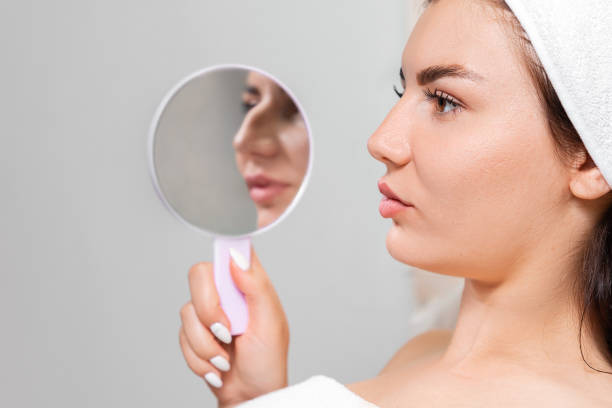
Undergoing rhinoplasty can be life-changing—but not always in the way patients hope. Some may experience unsatisfactory results, breathing issues, or complications from their initial surgery. That’s where revision rhinoplasty surgery in Dubai comes in.
This specialized procedure is designed to correct problems from previous nose surgeries, whether cosmetic, functional, or both. It requires advanced surgical skills, meticulous planning, and a deep understanding of nasal anatomy to restore both appearance and function.
What is Revision Rhinoplasty?
Revision rhinoplasty, also called secondary rhinoplasty, is a corrective procedure performed after an initial nose surgery. Reasons for needing it include:
-
Dissatisfaction with cosmetic results
-
Persistent breathing difficulties
-
Structural issues caused by overcorrection or undercorrection
-
Complications such as scar tissue buildup
Why Patients Seek Revision Rhinoplasty in Dubai
Dubai attracts top-tier surgeons who specialize in complex nasal surgeries. Patients choose revision rhinoplasty here because:
-
Surgeons have extensive experience in secondary procedures
-
Access to advanced imaging technology for precise planning
-
Privacy and comfort in world-class clinics
Common Reasons for Revision
-
Over-Resection: Too much cartilage or bone removed, leading to a collapsed or pinched appearance
-
Asymmetry: Uneven nasal structure post-surgery
-
Breathing Issues: Caused by structural changes during the first procedure
-
Unnatural Results: A nose that doesn’t match facial proportions
Challenges of Revision Rhinoplasty
Revision surgery is more complex than a primary rhinoplasty because:
-
Scar tissue can distort anatomy
-
Cartilage may be weakened or missing
-
Grafts from other parts of the body (rib or ear cartilage) may be required
Surgical Techniques
-
Open Approach: Provides full visibility of nasal structures, often necessary in revisions
-
Closed Approach: Suitable for minor corrections without external incisions
-
Cartilage Grafting: Restores lost support and improves shape
-
Scar Tissue Removal: Improves skin flexibility and final contour
The Consultation Process in Dubai
An in-depth consultation is crucial for successful revision rhinoplasty. It includes:
-
Reviewing past surgical history and results
-
Performing detailed nasal analysis
-
Setting realistic expectations using 3D simulation
Recovery Timeline
-
First Week: Swelling and bruising managed with splints
-
Weeks 2–4: Visible swelling decreases, daily activities resume
-
Months 6–12: Final results appear as tissues heal completely
Recovery for revision cases may be slightly longer due to the complexity of the procedure.
Risks and Considerations
-
Longer healing time
-
Risk of persistent asymmetry
-
Scar tissue development
-
Breathing changes if healing is compromised
Choosing the Right Surgeon in Dubai
Because revision rhinoplasty is highly technical, it’s important to select a surgeon with:
-
Proven experience in secondary procedures
-
Before-and-after examples of successful revisions
-
Strong understanding of nasal aesthetics and function
Final Thoughts
Revision rhinoplasty surgery in Dubai can transform a disappointing or problematic first surgery into a natural, functional, and aesthetically pleasing result. It requires patience, trust, and a surgeon with exceptional skill.
For precise corrections and natural outcomes, Tajmeels Clinic in Dubai offers specialized revision rhinoplasty, combining advanced surgical techniques with a patient-focused approach to restore both confidence and comfort.
FAQs About Revision Rhinoplasty in Dubai
Q1: How soon after my first rhinoplasty can I get a revision?
A: Surgeons usually recommend waiting at least 12 months for tissues to fully heal.
Q2: Is revision rhinoplasty more painful than the first surgery?
A: Discomfort levels are similar, but recovery may take longer due to tissue complexity.
Q3: Can revision rhinoplasty fix breathing problems?
A: Yes—functional corrections can be performed alongside cosmetic improvements.
Q4: Will I need cartilage grafts?
A: Often yes, especially if too much structure was removed in the initial surgery.
Q5: Is revision rhinoplasty riskier than the first surgery?
A: It’s more complex, but in the hands of a skilled surgeon, risks are manageable.







